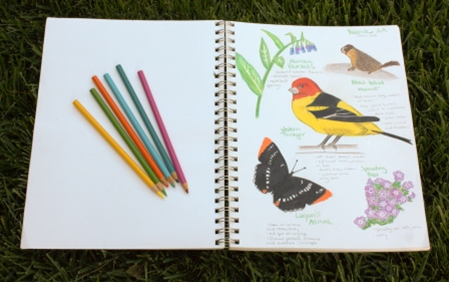
A great topic for Earth Day is native plants. Native plants have a symbiotic relationship with both natural and human communities.
Now, more than ever, environmental health is equated with human health, and it’s up to everyone to protect it. It’s fitting, then, that the theme of Earth Day 2021 is “Restore Our Earth.”
With this article you will explore the differences between native, non-native, and invasive plants; how invasive plants threaten the environment and why native plants sustain it; and what your classroom can do to get involved.
We also share links and offer suggestions for PLT activities with this native plant theme to help you plan for Earth Day this year.
What Are the Differences Between Native, Non-Native, and Invasive Plants?
Here are the key differences between native, non-native, and invasive species of plants, which encompass flowers, herbs, grasses, trees, and shrubs.
Native Plants
Native plants are simply that: plants that exist naturally. Native plants have existed (without human introduction) and developed over hundreds to thousands of years in a particular region, ecosystem, or habitat. In North America, native plants grew on the continent before Europeans arrived in the 15th century.
Throughout North America and the world at large, native plants should be referred to by their particular geographic region. Some North American regions include the Midwest, the Desert Southwest, and the Pacific Northwest. Sometimes native plant species are also listed by state.
Native plants can vary across an established region since different ecosystems exist within short distances. For example, a freshwater marsh in North America is likely to have soft-stemmed plants that have adapted to thrive in wetter environments like cattails, lilypads, reeds, sedges, sawgrass, and very few trees. Meanwhile, in a tallgrass prairie–which extends north and south all the way from Manitoba to Texas in a narrow band–you can find big bluestem, switchgrass, western wheatgrass, annual sunflowers, and even some woody species like the bur oak tree.
Non-Native Plants
Non-native plants include species introduced by humans (either intentionally or accidentally) to a region or ecosystem where it wasn’t already growing.
Some non-native varieties don’t pose a direct threat. Sometimes they can even benefit their new environment when they’re introduced carefully, though this is fairly rare.
However, not all non-native plants are beneficial or even neutral when they’re introduced – many are considered invasive and problematic.
Invasive Plants
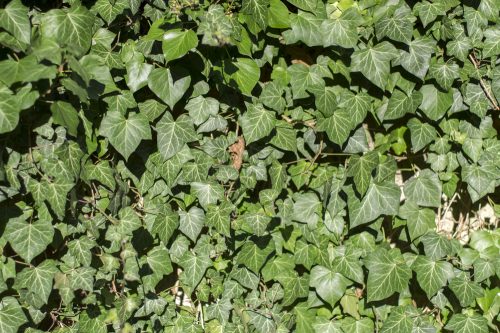
Invasive plants are non-native species that spread in a location and disturb surrounding plants and the ecosystem as a whole. Often, invasive plants spread to areas they don’t belong to when humans move them, but sometimes they spread with the help of birds, strong winds, or even climate change.
Unfortunately, many garden centers still sell a number of plant species that are considered invasive for people to plant at home, which can pose a big problem for the environment, especially if they spread easily.
There are thousands of other non-native ornamental plant varieties to choose for lawns that are not invasive.
Note that not all non-native plants are considered invasive. Plants like hostas, tulips, and many others aren’t considered invasive because they don’t spread rapidly enough on their own to cause harm to their environment.
How Invasive Plants Threaten the Environment
Invasive plants pose a serious risk to the environment. In fact, they are one of the main causes of the decline of 42% of endangered and threatened species in the U.S.
Invasive plants are successful because they can spread rapidly, thrive on disturbed soil, and their root systems can be so dense or long that they smother other plant roots around them. Some of their leaves or roots even produce chemicals that suppress the growth of surrounding plant life. They compete with native plants for water, sunlight, space, and nutrients. They can degrade wildlife habitat and lead to a great loss of plant and animal biodiversity.
One example of an invasive plant is the common buckthorn. This invasive species was introduced to the U.S. from Europe and Asia to fence off properties. Since then, it has spread like wildfire across most of the Midwest and has taken away critical resources many native plants needed to survive.
In addition to disturbing the surrounding flora and fauna, invasive plant species can also damage resources that benefit the economy, degrade soil and water quality, hinder recreational opportunities, and even negatively affect human health.
Native Plants Naturally Benefit the Environment, But They’re In Danger
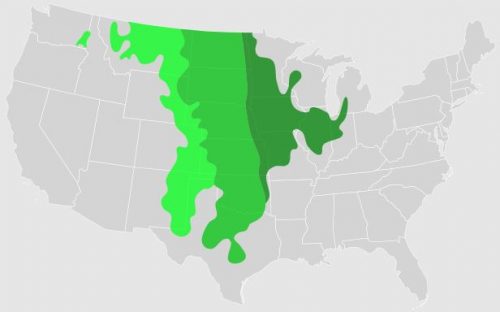
The prairie grassland is one of the most diverse ecosystems in the world, second only to the Brazilian rainforest. Unfortunately, as most of the prairie’s plant life has been destroyed and taken over by farming and urban sprawl, the tallgrass prairie has declined by 99 percent and mixed-grass prairie by 68 percent. The prairie is now considered North America’s most endangered ecosystem.
While many non-native plant species don’t threaten environmental health directly on a small, case-by-case basis unless they’re invasive, the loss of native plant life has become a critical environmental issue.
In the U.S., people have planted around 40 million acres of lawns with non-native grass.
Since over 80 percent of the contiguous U.S. is privately-owned and the benefits native plants provide are crucial for the entire environment, everyone must promote native plantings.
Why Native Plants Are So Important To The Environment
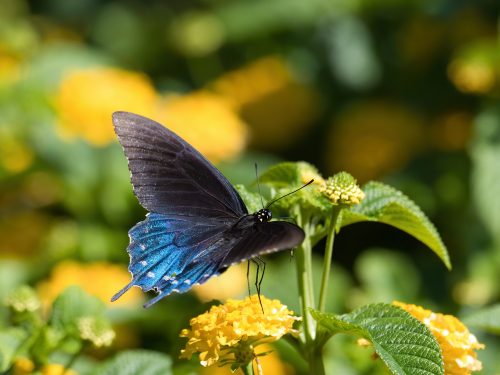
They Increase Biodiversity
Native plants support the delicate balance in an ecosystem that organisms need to thrive. They increase the biodiversity of a habitat year-round by providing food, shelter, and nesting for local wildlife.
Native pines make great spots for larger birds like turkeys to roost in, and hardwood trees attract squirrels, ducks, and screech owls that nest in their holes.
Native plants also provide birds and other animals with food either directly with fruits and seeds, or indirectly with the native insects that feed on the plants. The success of local and migrating birds as well as many kinds of insects– including pollinators like butterflies and bees–depends on them for sustenance.
Carolina chickadees feed on caterpillars that are even more particular about the type of native plant they eat since they evolved with those plant species. Astoundingly, more than 90 percent of the moth and butterfly caterpillars that many species of birds like only consume particular native plants. Monarch butterfly larvae only feed on native milkweed plants.
A study found that, if property owners in the Washington D.C. area were to keep their yards filled with 70 percent native plants versus non-native, it would be enough to support native wildlife. These numbers are likely similar across the country.
They Save Time, Energy, and Resources
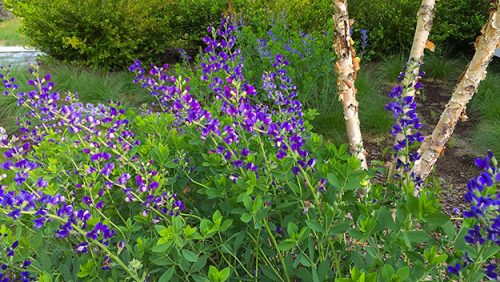
Because native plants have adapted over hundreds of years to an area’s ideal growing conditions, they require fewer resources and less maintenance than non-native gardens. This means they developed natural predators over time which prevent them from becoming invasive. An established native plant community also has more power to resist the takeover of non-native plant species threatening a habitat.
Native plants are usually pest and disease-free, so they don’t require pesticides to keep insects at bay, or even fertilizers to assist with growth. This means they keep the local water supply cleaner due to decreased chemical runoff from yards.
Imagine all the time saved by not ever having to mow! With a native plant yard, little to no mowing is required. In addition to the added convenience, this cuts down on the excessive carbon produced by burning fossil fuels. Native plants also remove carbon from the air. All of this helps alleviate global warming and reduces air pollution. It’s the same story with winter mulching: There’s no need for it, which means more trees and money are saved.
Native plants don’t require much water (if any at all) because their drought-tolerant root systems often extend deep into the ground, allowing the soil to store more water. This also greatly reduces water runoff and helps prevent erosion and flooding.
Large native trees and shrubs also provide windbreaks during winter and shade in the summer. The U.S. Department of Energy states that a well-positioned tree can actually save up to 25 percent of a household’s energy usage for cooling and heating.
They Are Attractive and Inspiring
Native plants that attract wildlife are also quite pleasing to the five senses. Wildflowers come in a wide spectrum of colors like purple aster, vibrant red and yellow blanket flowers, wild blue flax, and many more that differ according to the ecosystem. Smaller woody plants like red bud trees and dwarf azaleas have stunning and fragrant blooms and prove there is a plant for every size yard.
When one person chooses native plants in their yard, their community can benefit by gaining awareness of and appreciation for preserving their environment’s natural heritage.
Get Involved With Your Students
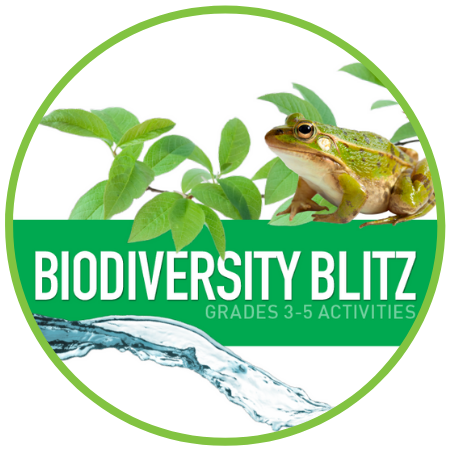 Investigate Variability Among Species in an Ecosystem
Investigate Variability Among Species in an Ecosystem
Use PLT’s new Activity Collection Biodiversity Blitz for grades 3-5 as an introduction to help students become more aware of the diversity of life, why there are so many different species on Earth, and how diverse organisms are connected in an ecosystem and impact one another,
In the activity Discover Diversity, for example, students are encouraged to think about what happens here on Earth if a non-native animal is introduced to a new ecosystem. You could share an example of an invasive species in your area to help students understand that this wouldn’t be a good idea.
In PLT’s Web of Life activity, students create a web of life illustration showing the impact of one species on other organisms. Similarly, you might provide students with information or a link to an article about a non-native invasive species (plant or animal) that is causing a negative impact on the local environment.
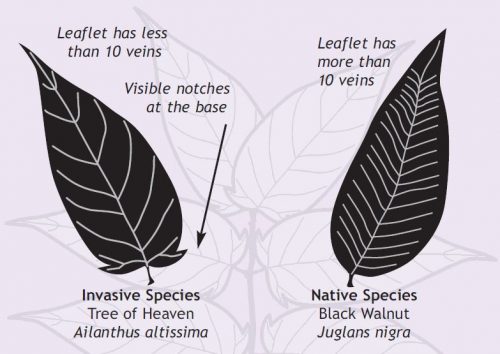
Investigate Invasive Species
Our free Invasive Species family activity includes a quick “fill in the vowel” exercise to identify common characteristics of invasive species and compares Black Walnut (a native species) to Tree of Heaven (an invasive species).
Learn more about Tree of Heaven, a devilish invader that produces an overly abundant amount of seeds, crowds out native species with its dense thickets and secretes a chemical into the soil that is toxic to surrounding plants.
Learn About Local Plants in the Great Outdoors
Bring your lessons about native and invasive plants to life by taking a class field trip to a local arboretum, botanical garden, or native plant nursery. Many arboretums or gardens will have sections dedicated to native plants and might also have a few invasive varieties set aside to look at.
Any organization that promotes conservation or awareness of native plants in your area is likely to have special opportunities to learn about these plants firsthand. Check out the U.S. Forest Service’s list of arboretums and organizations throughout the country that promote native plant preservation through guided walks, seed exchanges, native plant gardening workshops, and more to get started. Note that not all local organizations and arboretums have been listed, so you may have to do a bit of digging. Click here for Plant Native’s local native plant nursery directory by state.
Encourage your students to go on a nature walk. They will be surprised at what they can observe on their own! Just let them know that native plants should stay where they are and that collecting them can be dangerous for a natural ecosystem.
Wildlife conservationists from Jane Goodall to John Muir would say that nature journaling is an excellent way to teach learners of any age to become keen observers of the natural world. Check out our tips and ideas for starting your own nature journal before your next outdoor outing: by drawing and writing about native plants and the animals that are drawn to them for survival, your students can integrate art, science, and the language arts to learn the power of observation and documentation along nature walks. This comprehensive guide to nature journaling by John Muir Laws will have them scribbling in no time.
Here are a few more helpful lists to get to know local native and invasive plant species:
- National Wildlife Federation’s Native Plant finder
- The U.S. Department of Agriculture’s Noxious Weed (or invasive plant) list
- Xerces Society’s pollinator-specific list of native plants
You could use PLT’s Forest Invaders activity found in our secondary module, Focus on Forests, to help high school students consider what makes invasive species a problem for forest ecosystems. Students will work in teams to present different methods of controlling an invasive species and conduct research to find out how invasive species may affect their local forest.
Start Growing Native Plants!
Teach students how they can grow native plants at home and in their community, or show them how to do it themselves by starting a native garden project at school.
For inspiration, see how classrooms involved with Project Learning Tree created these noteworthy school gardens and natural habitats that protect local pollinators or where a high school science teacher found funding for a greenhouse for students to propagate native plant species.
Empower your students to help the environment by using their STEM skills to design and lead an action project that promotes native plants with Project Learning Tree’s GreenSchools program. PLT’s GreenSchools program inspires students to improve the environment at their school, home, and in their community. This nationwide service-learning program offers training and resources for teachers and students to reduce their school’s environmental impact, improve health and wellness, and save money.
Advocacy and Volunteering
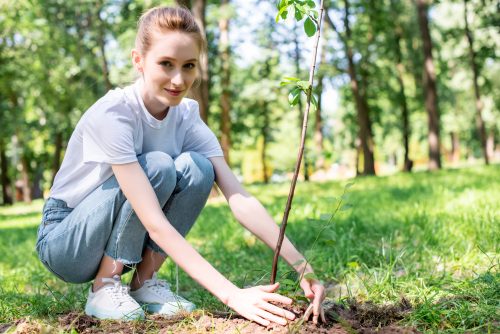 Students can heighten their awareness of native plants’ importance and work to strengthen their local ecosystem through advocacy and volunteer work. They can advocate in many creative ways. One way is to inform people they know about what they’ve learned and how they can help.
Students can heighten their awareness of native plants’ importance and work to strengthen their local ecosystem through advocacy and volunteer work. They can advocate in many creative ways. One way is to inform people they know about what they’ve learned and how they can help.
This STEM Strategies PLT article suggests students work in small teams to design and create their own “invasive species” board game. The purpose of the game must be to educate players about the biology, impact on ecosystems and biodiversity, control, prevention, policy, and identification of invasive species. Students must write the rules and instructions for the game and test their game to determine if it “works.” Check out the article for examples of games other students have created and the “Race to Displace!” board game for some ideas.
Students can also write to or call local officials to advocate for laws that support more native-plant friendly yards — or contact local nurseries to encourage them to stop selling invasive ornamental plants and request they offer more species native to that area.
They can also volunteer with local organizations to prevent invasive plants from threatening a habitat or restore native plant populations that sustain it, like these eighth-graders at Fremont Middle School in Indiana who partnered with the Clear Lake Township Land Conservancy to identify and remove invasive species along a hiking trail.
Let us know in the comments below how you plan to integrate teaching about native plants to support the Earth Day 2021 theme “Restore Our Earth.” And we hope you use this Earth Day (and every day!) as an occasion to get outdoors and let nature rejuvenate you and your students!


